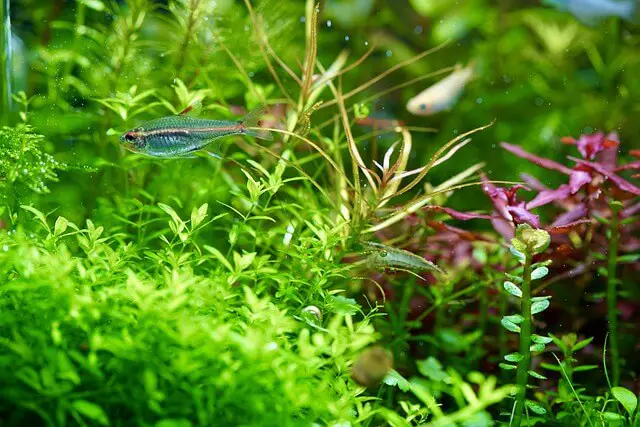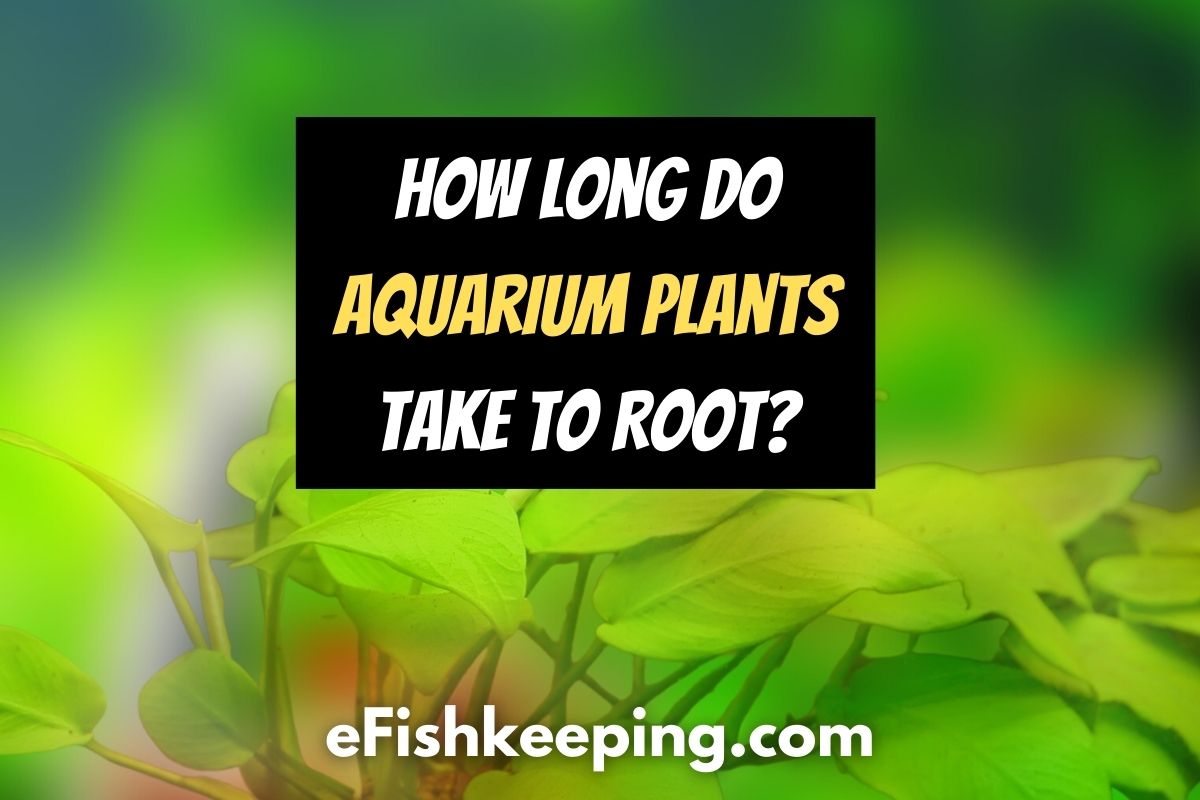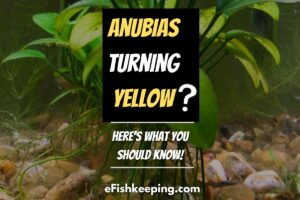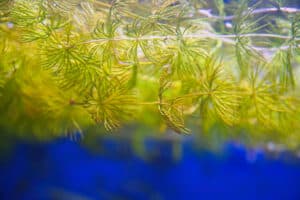Plants in an aquarium make for a magical aquascape. But adding plants means you will have to be a bit of a gardener and understand the necessary growing conditions, like growth time.
So, how long do aquarium plants take to root? The answer isn’t so simple; it depends on the type of plant(s) you have. Ergo, it could take as little as a couple of days to as long as a week or more after you put them into the tank. So there are many variables to consider, such as substrate, pH balance, and water hardness, among others.

For instance, Hornwort or Anacharis will grow rather quickly, whereas crypts, Amazon sword plants, and vals will need a month to root before you see any amount of growth. But, Anubias and Java Fern will be instantaneous.
Continue reading till the end to learn more about this topic!
1. What Should You Know Before Incorporating Plants into an Aquarium?
While adding plants can be a beautiful and transformative element to any tank, it does take a lot of work and upkeep. The lush, green mini seascapes you can find from other aquarists online take a long time to create. So, patience, determination, and observation will be crucial.
This means using the proper substrate and strategic placement in relationship to the kinds of fish and situation you have.
Unfortunately, many factors can contribute to uprooting the plants, and this you want to avoid. Regular fish activity, strong currents, and mating battles can all be culprits.
Therefore, you should mentally prepare yourself for some serious challenges. But, you should look at them as a fun puzzle, which will make this more of a rewarding adventure.
If you find that having a planted tank is going to be too much work, you should avoid doing it. Neglected plant life can wreak havoc on fish.
2. What Is the Average Amount of Time It Takes for Aquarium Plants to Root?
You can expect root-based plants to take hold from three days to two or three months. It depends on the species, variety, and conditions of the tank. If you already have a hand at gardening, then you should already be familiar with soil and growing media. The more nutrient-rich the substrate, the faster the plants will take root.

This means you will have to do a lot of background research on the various aquarium plants available.
Your studies should include finding out desirable environmental conditions for each plant. This will include substrate, light, airflow, fertilizer, and other maintenance, such as pruning, propagating, and arrangement.
3. What Kind of Substrate Helps Plants Grow Roots Faster?
Since this is an aquarium, you can’t use soil per se; getting root tabs will be ideal. They will help with plants lush development by providing essential nutrients in the substrate.
Also, you will have to ensure the base of the plant anchors securely to the substrate for this to work.
If you want a thick carpet with lots of plants, the best way to do this is to lay down a framework on the bottom of the tank, under the substrate. It should cover the entire expanse of the aquarium. You can use something like mesh.
For a minimal planted appearance, use small pieces of mesh in the places where you want the plants.
But, this also means you shouldn’t have bottom diggers or cichlids, where they will disturb the roots. If there’s no helping this, then use something like driftwood or a good, solid stone.
4. What Other Variables Contribute to Aquarium Plants Rooting Faster?
Aside from the substrate, things like pH balance, temperature, the health of the plant at the time of purchase, dissolved minerals, and water hardness will influence root propagation. This includes things such as CO2, potassium, nitrogen, and lighting, among others.
Once again, all this will come down to the type of plant and its specific needs.
To illustrate, you don’t have to fuss over plants requiring little light. These often proliferate quickly under basic conditions.
However, plants that need lots of light will also require CO2 supplementation.
5. What Kinds of Lighting Do Aquarium Plants Need to Root and Grow?
For lighting, use an LED, T5, or T8 bulb that provides eight to 12 hours each day. So, it’s advisable to have a 24-hour timer to ensure plants and fish get the light they need. This is a delicate dance since too much light can promote algae growth.
Depending on the plant, fertilizer may be essential from time to time. It should have a balance of potassium, phosphorus, and nitrogen. However, it should also contain trace micronutrients like iron, manganese, and boron.
For floating plants or ones anchored to objects, use a liquid fertilizer. In other cases, you may want to use a fertilizer designed to target specific areas, so it doesn’t spread throughout the tank.
6. How Do You Add Plants to an Aquarium to Ensure Quick Rooting; Growth?
Of course, the way to initiate and introduce the plants to your aquarium will make all the difference in the world. While the type of plant(s) you have will heavily influence your method, consider the following steps:
- When you obtain the plants, remove them from their pots or bag and put them in a holding container filled with water.
- Prepare the area in the tank for the plants. Scoop away some of the substrate, about an inch or two in-depth, and put down a root tab.
- Place the plant in the substrate and cover lightly but just below the start of the stem. Avoid compacting the substrate around the tender roots so water and airflow can get through.
- If you find it difficult to keep a plant anchored to the substrate or object, try to tie it down with some cotton thread or fishing line.
7. How Do You Proceed Once Plants Are in Place?
As the plants begin to grow and develop roots, you have to keep an eye on the tank and the progress of the plants.
You have to pay attention to any deficiencies and struggling. Signs of this will include wilting, discoloration, foliage dying, and little holes on the surface of the leaves.
For instance, yellowing leaves may mean the plant isn’t getting enough light or nutrients.
Read: Why Do Anubias Turn Yellow And How To Cure?
Holes on the surface may come from fish nibbling on the leaves, but it can also mean there’s a pest prevalent throughout the tank.
Pruning; Trimming
At some point, it will be necessary to remove fresh and dead growth. This will prevent certain plants from taking over the tank, and it will rid the area of dying matter.
Some plants have specific pruning requirements, or they will die, and others you can trim anywhere without any affectation.
- Mosses: Mosses are generally simple to care for, especially if there are high levels of nitrate in the tank. Therefore, pruning is fairly simple. However, you might want to take it out of the tank first. When you put it back in, affix it to an object, so it stays in place.
- Potted Plants: Any kind of potted plant won’t need a lot of care. However, these are slow growers. If it gets too thick, remove leaves from the base. This is especially true with you see dying or yellowed foliage. When the plant is too tall, remove the oldest leaves and allow the newer growth to remain.
- Rhizomes: Plants with rhizomes, or bulbous and fleshy roots, only require trimming when dead growth is apparent. To reduce the size of the plant, separate the rhizomes and put them in a new location.
- Stem Plants: Plants with stalks will require frequent pruning, more so than any other type. This means you have to know what you’re doing to avoid killing it. In most cases, you simply take off a couple inches off of the top. But this removal shouldn’t be more than ½ of the plant’s total length.
Conclusion
Creating a live planted aquarium can be a rewarding yet challenging experience. If you already have a green thumb, then most of this will be run-of-the-mill basics. However, if you’re new to this, start with one or two plants to see how you do with them before you go all out.
Keep Reading…
Hi! I’m Praveen Ghoshal, the founder of eFishkeeping.com. Inspired by my Dad, I got interested in fishkeeping when I was a kid. Since then, I have been involved with this hobby. Currently, I have 3 fish tanks at our home, and I enjoy this hobby with my full family. Read more about me here.




![Why Are Anubias So Expensive? [Reasons + Cheap Alternatives] why-are-anubias-so-expensive](https://efishkeeping.com/wp-content/uploads/2022/12/anubias-in-a-planted-aquarium-300x200.jpg)



